Where can you add biodiversity?
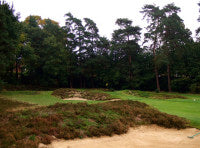 Many golf courses have the potential to incorporate anywhere between fifty to sixty hectares of non-playing 'environmental' areas into their layout. This would equate to between 25-45% of the average golf course. So, there is significant potential for golf to alter its perception of being an intrusive and often unsustainable sector.
Many golf courses have the potential to incorporate anywhere between fifty to sixty hectares of non-playing 'environmental' areas into their layout. This would equate to between 25-45% of the average golf course. So, there is significant potential for golf to alter its perception of being an intrusive and often unsustainable sector.
But, where can you add Biodiversity?
In this example, biodiversity has been added to a relatively new layout through incorporating extensive native plantings of heather on bunker faces and banks, adding beauty and instant character:
• Walk on and walk off areas surrounding tee complexes
• Out of play margins around the course (corners of the course, buffer strips alongside hedgerows)
• Areas around maintenance facilities
• Margins of existing hazards, e.g. woodlands and water hazards
In recent years, organisations have suggested that new golf establishments meet specific criteria relating to their impact on the surrounding environment. Not least BIGGA, the GCSAA and the EIGCA are all actively promoting the sustainable creation and management of golf facilities.
Good examples would be: 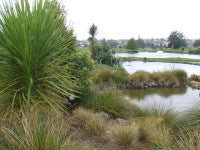
• Native plantings/areas: can be incorporated as carries and natural features around watercourses
• To incorporate native and indigenous wildlife and flora
• Enhance the beauty of the landscape
• Enhance the character of the landscape
• Enhance the challenge and playability of the golf course
Obtrusive and high impact designs will create there own problems:
• Monostands of turf grass species
• High inputs of chemicals and nutrients to sustain intensively manicured land use
• Limited scope for native wildlife (buffer zones, corridors, riparian habitats)
• Lack of character
• The golf course sits at odds with its natural landscape
Key Points to consider in planning phase of design:
• Integrate wildlife in to plans
• Conduct full appraisal and survey of baseline ecological data across existing site
• Understanding the client's needs and how these can be achieved, but with minimal negative impact
• Engage local communities and government
 A case study of biodiversity.
A case study of biodiversity.
Having been involved as an Ecological Consultant on numerous golf developments, the following is an example of good practice in relation to a new championship course in Northern Europe.
The project's aim was to create a challenging, championship golf course in an area of outstanding natural beauty.
A summary of the key points involved in the planning stage were:
• Enhancement of nature conservation value of existing agricultural and commercial land
• Creation of diverse habitats - woodland, wetland, grassland and heathland
• Retention of existing distinctive landscape character
• Management priorities integrated with design process
• Design and planning agreed by dedicated team involving agronomist, project manager, contractors, architect and ecologist
The stages of planning and construction were:
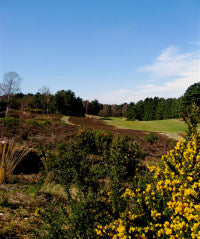 1. Enhancement of nature conservation
1. Enhancement of nature conservation
The design team had to study the existing site, topography, slope and natural elevation in relation to the incorporation of a golf course. From the outset, baseline data was gathered highlighting existing flora and fauna communities across the site. From this point accurate planning could then take place ensuring theses sensitive areas would be avoided and, if necessary, compensated for.
2. Creation of diverse habitats
Contingency plans were put in place to replicate any compromised sensitive habitat. Alternative areas were decided upon to compensate for any localised habitat loss. A full time environmental manager was appointed at the construction phase.
The project involved carving fairways out of existing thick coniferous forest. This was done, where possible, by hand so as to minimise adverse disruption to native wildlife and soil characteristics. Also, at this time, the fairways were created along the lines of forming man-made 'glades', effectively opening up the forest to greatly enhance the diversity of woodland floor fauna.
Old or dead trees were left in place to remain as perching posts for raptors, and as natural features to further enhance the character of the course.
3. Retention of existing landscape and character
The most was made of existing landscape features such as valleys and hills. Marshlands were worked around rather than through. Large carries over sensitive areas would create nature reserves that also added instant character and challenge to the golf course.
4. Future management integrated into the design process
There was constant communication and consultation between the design team, project manager and course manager.
It was also important to liaise with local wildlife and community organisations to reduce 'gossip' and negative publicity.
All features and key points of the design were created with the long-term issues of maintenance and management in mind. i.e. accessibility, turning, likely future resources etc.
5. Design, planning and the environment
The onsite environmental manager was acting as a link between the developers, project manager and architect.
Artist impressions and computer generated visualisations were used at this stage to predict future enhancements to the landscape, and where further enhancements could be made relating to wildlife potential.
Ultimately, the project took two years to complete. The overall impact of the construction was largely limited to the initial felling of trees. As soon as possible into the project, sensitive areas were protected and measures put in place to actively enhance the biodiversity of the original site.
Golf and the environment
Golf and the environment will remain a sensitive issue. The negative impacts that so many courses had on their surrounding landscapes during the boom period of the 1990s has left a visible and psychological scar on the minds of many local communities.
To minimise future adverse reaction, architects and designers must consider natural topography and soil characteristics far more. Products and materials need to be sourced locally and their performance potential for our changing climate carefully considered. Imported soils should be kept to a minimum as the sustainable management of non-indigenous soils is questionable.
There will be a greater focus on hydrological issues and any disruption to ground water and/or over ground riparian ways must be accounted for.
With the future of golf course developments heavily limited by available land, the key option will become the recycling of land: landfill sites, urban wasteland etc. are all areas that would benefit from sensitive development.
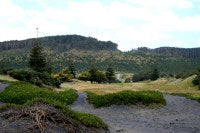 The perception of what a classic golf course is has changed. We have seen designers take their influence from the classic layouts of the 'golden era' in the 1930s. The challenge has become to incorporate the golf course within the landscape as opposed to impact upon it. In effect to 'show off' the natural beauty of the environment.
The perception of what a classic golf course is has changed. We have seen designers take their influence from the classic layouts of the 'golden era' in the 1930s. The challenge has become to incorporate the golf course within the landscape as opposed to impact upon it. In effect to 'show off' the natural beauty of the environment.
Few countries I have visited exhibit better examples of this philosophy than New Zealand.
Famed for its outstanding natural beauty, the perception of golf here is different to that across much of Europe. 'Country courses' are dotted around the rural landscape. These are designed and maintained along minimalist lines and thresholds, both in terms of playability and agronomy, and are far more accepting of imperfections than here in many of the UK's equivalent facilities.
The new course developments have seen some of the world's elite architects gain inspiration from the beautiful surroundings, and showcase these elements through sensitive and dramatic designs:
Murawai Golf Club is incredibly natural and unimposing on a beautiful and dramatic landscape, and is a classic example of sustainable golf.
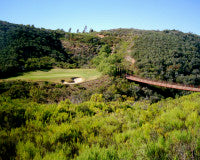 It is a great example of how native areas have been incorporated into the design and course layout. These native carries and framing of the course, with indigenous bush species, add challenge and beauty to the layout.
It is a great example of how native areas have been incorporated into the design and course layout. These native carries and framing of the course, with indigenous bush species, add challenge and beauty to the layout.
The spirit of the natural landscape is being celebrated throughout many of the golf courses in New Zealand, a concept that should be developed worldwide.
Naturalised plantations connecting intensively managed areas with natural habitats are exemplified at courses such as Sunningdale (below), where one of the Worlds Top 50 courses is presented amongst a framework of natural heath land ecosystems and habitats.
Will Bowden is the Programme Manager for all Sportsturf courses at Cannington College (Bridgwater). CHE (previously HNC) and Foundation Degrees (HND) in Golf and Sportsturf Management are offered.
